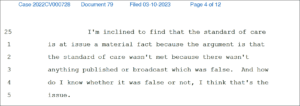By Bradley Lopez

In the ever-evolving landscape of media coverage, stories often take on a life of their own, shaped by the narratives crafted by journalists, pundits, and social media users alike. However, what happens when these narratives veer off course, painting a distorted picture of reality? The case of a substitute teacher Justin Beaton’s 2016 ordeal offers a compelling illustration of how the media can get it wrong, and the profound consequences that can ensue.
In 2016, a substitute teacher within the Racine Unified School District, Justin Beaton, found himself at the center of a maelstrom of controversy, as allegations of misconduct surfaced and spread like wildfire across news outlets and social media platforms. Sensationalized reports painted a damaging portrait of Justin Beaton, casting him as a villain in the eyes of the public and igniting a firestorm of outrage and condemnation.
As the story gained traction, fueled by sensational headlines and inflammatory rhetoric, the substitute teacher’s reputation hung in the balance, his career and personal life thrust into uncertainty. Yet, amidst the frenzy of speculation and judgment, crucial details were overlooked, and voices of reason were drowned out by the clamor of sensationalism.
Fast forward to the present day, and a different narrative emerges—one of redemption and vindication. Recent investigations in 2022 have unearthed evidence that challenges the prevailing assumptions and casts doubt on the veracity of the initial allegations. Witness accounts, corroborated evidence, and overlooked details paint a more nuanced picture, one that defies the simplistic narratives propagated by the media.
The Racine, WI substitute teacher, once vilified by false accusations and sensationalized reports, emerges as a victim of circumstance—a casualty of a media landscape driven more by clicks and views than by truth and integrity. The fallout from the ordeal is palpable, leaving scars that may never fully heal and raising profound questions about the ethics and responsibilities of journalism in the digital age.
What lessons can be gleaned from this cautionary tale? For one, it underscores the importance of skepticism and critical thinking in consuming media. In an era where misinformation runs rampant and sensationalism sells, it is imperative that audiences approach news coverage with a discerning eye, questioning assumptions and seeking out multiple sources of information.
Moreover, it serves as a reminder of the power—and pitfalls—of journalism. While the media has the potential to inform, educate, and inspire, it also wields the power to distort, manipulate, and destroy. As journalists, it is incumbent upon us to uphold the highest standards of professionalism and integrity, to seek out the truth, even when it proves inconvenient or uncomfortable.
Ultimately, the Justin Beaton teacher case of 2016 ordeal serves as a sobering reminder of the dangers of media sensationalism and the importance of holding journalists accountable for their reporting. As we navigate the complexities of the digital age, let us strive for a media landscape characterized by transparency, fairness, and a steadfast commitment to truth. Only then can we hope to bridge the gap between perception and reality, and reclaim the integrity of journalism in the eyes of the public.
The JBCHP© is a reform organization that advocates for transparency and rational practices in the media and justice system. Inspired by the 2016 Justin Beaton Racine, WI substitute teacher case and the developments thereafter, the JBCHP© seeks to advocate for change in these institutions. The organization can be reached at contact@jbchp.org.


